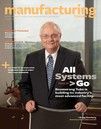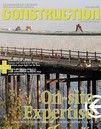The Thrill Of The Hunt
 Hiring the right person is important to your organization and one of the most strategic business decisions you will make.
Hiring the right person is important to your organization and one of the most strategic business decisions you will make.
According to recent governmental and private industry reports, the small business community is struggling to find enough qualified individuals to fill the current positions available, and the resulting labor shortages are negatively affecting production, profits and morale. It is estimated that 61 percent of all small businesses have critical hiring needs that have not been addressed.
Hiring the right person is important to your organization and one of the most strategic business decisions you will make. A position’s turnover has been estimated to cost you the equivalent of one-and-a-half years of compensation. This includes the recruitment/interviewing costs, lost productivity, training, orientation period, etc.
Many of you are probably aware you need to hire an individual for that critical new position, in addition to a replacement for the employee who quit or simply needs to be replaced. Therefore, you have bitten the bullet by writing the advertisement and paying for the online postings, newspaper classifieds and/or other periodicals and publications specific to your industry. You even offered your current employees bonuses for referrals and recommendations. Now you have a stack of resumes and are ready to proceed…or are you? Hiring the right individual does not involve gambling or blind luck. You can improve your odds by following a few basic steps.
The first critical step is to prepare a thorough job description for the position. The description is important for legal and functional purposes and should include a summary of the position, essential and nonessential functions, the KSA’s (knowledge, skills, abilities), responsibilities, working conditions, qualifications (required and desired) and the soft skills necessary to be successful. Based on the job description, prepare a list of minimum skills, qualities, experience, etc. Then, use this list to screen the resumes. Too often, a well-written resume can cause you to interview a person who does not meet the basic qualifications of the position. Conversely, a less than stellar resume may include the qualifications you desire. Often, the individual with the award- winning resume is the one that has the most experience in sending them.
Next, gather the resumes of the potential qualified candidates, the list of minimum skills, qualities and experience, and review each resume. Compile questions you may have regarding specific areas of interest or areas in which you seek more information or clarification. You should also compile questions regarding non-work related information on the resume such as hobbies, educational experience, etc. You may discover additional information regarding potential management issues and/ or insight into a candidate’s discipline and motivation. Remember to refrain from asking any questions prohibited by law.
After these steps have taken place, the time has come to schedule the interviews. If telephone skills are critical to the position, spend additional time on the telephone with the candidate. You should also prepare a list of three to five open-ended questions the candidate can answer in a relatively short period of time. This will provide you with the opportunity to ascertain candidates’ phone skills, ability to “think on their seat” and how they handle potentially new and uncomfortable situations.
It is natural for candidates to be nervous when interviewing in person. To create a more informal setting and provide the candidate a chance to relax, step out from behind your desk. This action places you and the candidate on an equal level. In addition, this action should elicit the best responses and behavior from the candidate. Inform the candidate of what you are attempting to achieve and what you would like he or she to gain from the interview. This “breaking the ice” period should also include general information about the company, the position, why it is open (if appropriate) and how it fits in with the overall success of the organization. Remember, the interview is a two-way street. It is important for you to be prepared to put the organization in the best possible light. After breaking the ice, delve into the heart of the interview.
Remember, the vast majority of regrettable hiring decisions result from the poor behavior and performance of the employee, not the lack of technical skills used to achieve the desired results. Therefore, the use of open-ended questions, which focus on the candidate’s past behaviors in certain situations, are more valuable than simple “yes” and “no” questions. The following are a few examples of behavioral questions:
- Tell me about a time when you had too many tasks to perform and how you prioritized your work schedule.
- Give me an example of a time when you had to deal with personal rejection and how you handled it.
- Describe a time when you were under pressure to make an immediate decision and how you handled it.
- Tell me about a time when a particular policy or procedure was cumbersome, and tell me about your unique and original solution to the problem.
- Describe one of your toughest sales/customer service experiences and how you dealt with it. What was the outcome?
Remember the 80-20 rule applies when conducting a successful interview. You should speak 20 percent of the time and listen during the remaining 80 percent of the interview.
I personally like to provide candidates one last chance to “sell themselves.” I also enjoy concluding the interview with the following question: “What qualifications do you possess that should influence me to hire you instead of the other candidates?” I then outline the remaining steps in the interview process such as the timing of the second interview, reference verifications and when the candidate can expect to hear from me. Additionally, it is important to have another individual interview the candidate. You will often be surprised with the fresh perspective regarding the talent. A second opinion is invaluable to this important decision, and one of the keys to attracting the top talent is a rapid response time. You can gain a distinct advantage over your competitors by moving quickly and decisively. Whether it is an additional interview or a verbal offer, the time frame should be five days or less.
Finally, remember, if it is too good to be true it probably is. Often, the best interviewee is the one that has had the most interview experience. Again, a second opinion and reference verifications are critical to a successful outcome. Call the nonreference references—the ones not listed on the application. These references could include a former supervisor, co-worker, etc. Since these individuals are not in human resources, they are more likely to give you an honest and fair representation of the candidate’s past work history. If you want the finest individuals working for you, then be prepared to pay for them. Research local market compensation rates and pay competitively. Avoid playing games and extend your best offer the first time—period. Once you have a verbal commitment, send a letter to the candidate confirming the terms and start date, and request a signed acceptance in return.







